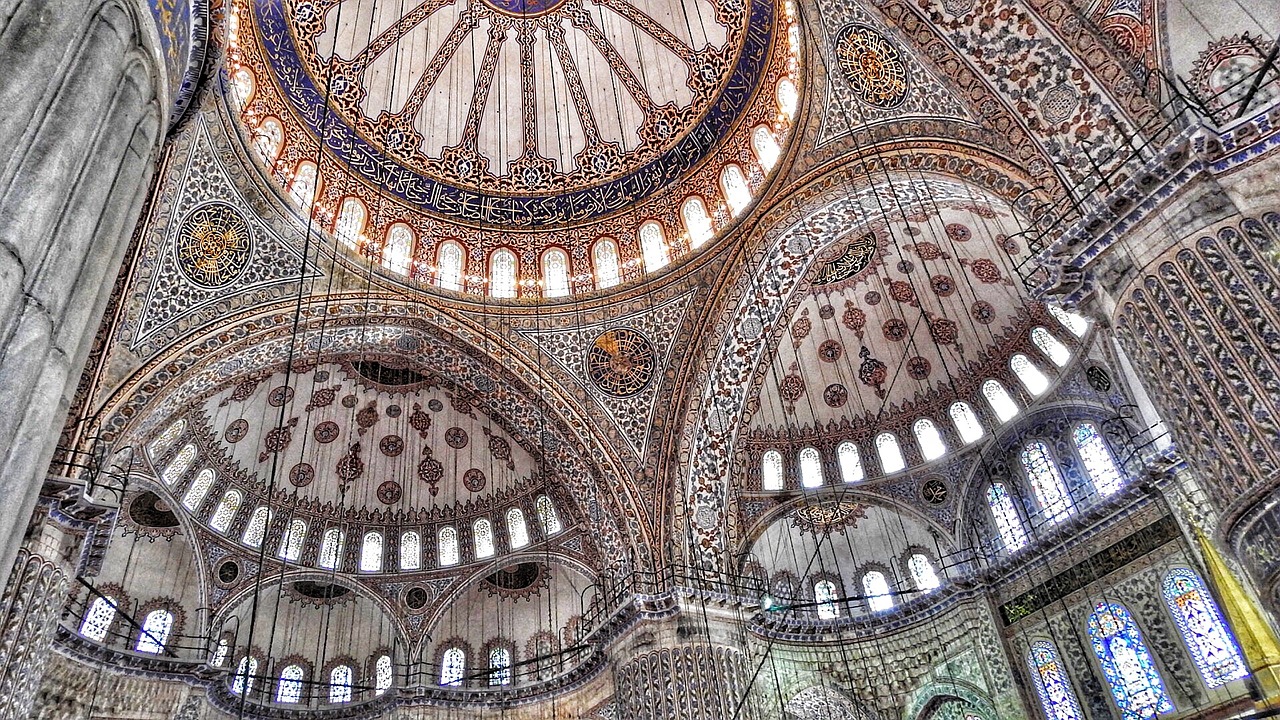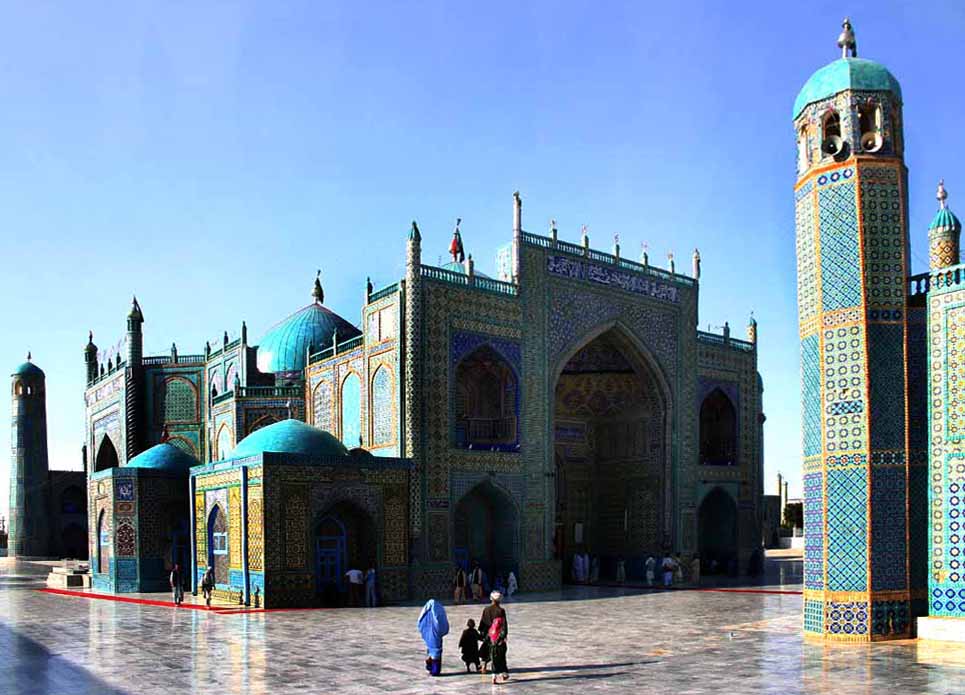Of the many incredible historic sites and monuments found all over Afghanistan, the Blue Mosque is perhaps the most breathtaking. Located in the beautiful city of Mazar-i-Sharif, the Blue Mosque was built in its present form more than five centuries ago, and is often described as an “oasis of peace” by visitors and locals alike. Here’s what you need to know about this stunning example of Afghanistan’s cultural heritage.
It’s a huge complex.
Although its name might lead you to imagine a single building, the Blue Mosque is really a large and rather elaborate complex that covers roughly 22,000 square feet in the center of Mazar-i-Sharif. Surrounded by an extensive park, the Blue Mosque encompasses a courtyard, a small museum, and a number of holy tombs in addition to the large prayer hall. Experts often cite the Blue Mosque as one of the most exquisite examples of classical Islamic architecture in the world.
It’s an important shrine.
The Blue Mosque is an important place of pilgrimage because it’s believed to house the remains of Ali bin Abi Talib, a son-in-law and cousin of the prophet Muhammad. According to legend, a local mullah in the 12th century had a dream in which Ali revealed that he had been secretly buried in what is now northwestern Afghanistan, near the ancient city of Balkh. The Sultan of the Seljuq Empire, who was the ruler of the region at that time, was so captivated by this story that he ordered a shrine to be built on the site revealed in the dream; he also created the city of Mazar-i-Sharif around the shrine.
Although this original shrine lasted barely a century (it was unfortunately destroyed by Genghis Khan during the westward movement of his Mongol armies), it was rebuilt in 1481 by Sultan Husayn Mizra in the form of the Blue Mosque. Today, the shrine of Ali is the largest part of the complex.
It has a resident population of doves.
One of the first things that visitors notice upon entering the park surrounding the Blue Mosque are thousands of snow-white doves soaring overhead and pecking at the ground along the park paths lined with rose bushes. The reason why the doves seem so at home here is because they are: these doves are official residents of the complex. Raised by the Blue Mosque’s attendants ever since the original shrine was built, the doves live in the pigeon house located to one side of the mosque: year-round, this large, low, small-windowed concrete structure is where the doves nest, breed, and receive food. Today, they are one of the Blue Mosque’s most famous symbols, with local legend recounting that the doves are pure white because of the mosque’s holiness.
Calls to prayer now take place over a loudspeaker system.
Although the Blue Mosque dates from the 15th century, this doesn’t mean that every part of it is old. Today, when the muezzin chants the traditional call to prayer, he does so over a loudspeaker system that broadcasts the call across the city. This is quite different than the way things worked a generation ago, when four muezzins would stand at the top of the mosque’s minaret, each facing a different direction, and chant the call to prayer in perfect unison. However, the effect is largely the same: then, just as now, worshippers all across the city could hear the call.

Image courtesy Wikipedia
Thousands of intricate tiles cover the mosque’s exterior.
The Blue Mosque gets its name from the thousands upon thousands of stunning tiles that cover virtually every inch of the structure. Each tile is about the size of a hand, and together they form large mosaic patterns that are exquisitely detailed and produce incredible visual effects. For example, the tiles are arranged in such a way that, when looking at the mosque from farther away, it appears to be floating. This is a classic trick of Islamic architecture: the idea is to use the colors and designs of the tiles to distract viewers so that they forget to notice the solidity of the building. Instead, the mosque appears miraculously weightless—a visual representation of its sanctity.
A tile workshop is located just outside the mosque complex.
Not surprisingly, the intricate tilework of the Blue Mosque requires constant upkeep. Exposure to the elements gradually wears away at the tiles. Visiting worshipers also do damage by stealing small pieces of tile to take home as a treasured memento of their pilgrimage. Fortunately, the Blue Mosque maintains its very own staff of resident tile makers, who practice their craft in a small workshop just outside the mosque complex. The workshop and its artisans produce roughly six square meters of tile every month.


